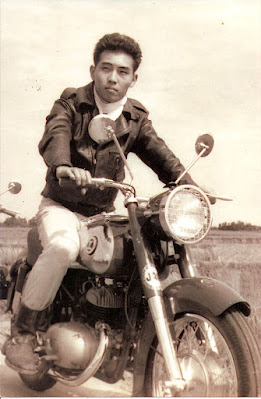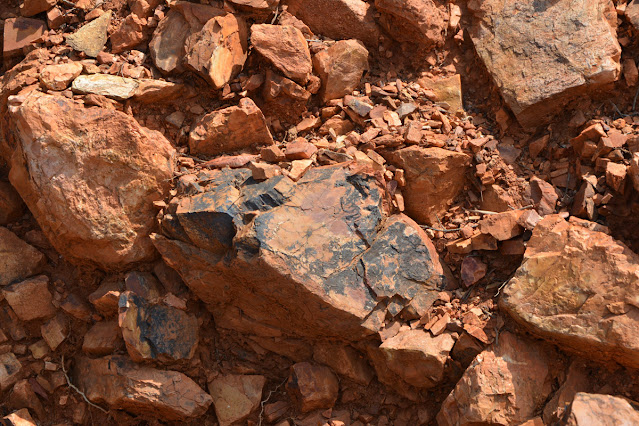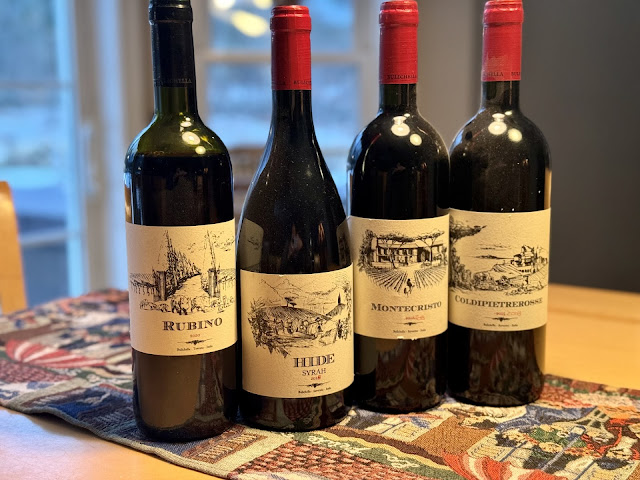Over the past few months I’ve been highlighting some of the wines of southern Tuscany highlighting some of the differences of those from the more northernly neighbors in Tuscany. This week we’re exploring the area of Suvereto checking out the Bulichella winery and their “super Tuscan” style wines.
The southern Tuscany region
Suvereto is said to be the “borghi piu belli di Italia”, one
of the most beautiful villages in Italy, based in the Livorno province of
Tuscany about 50 miles southwest out of Florence bordering the Tyrrhenian Sea. This area is considered the Maremma, which
you may recall me talking about some weeks back. It’s situated between the hills and the sea,
also known as the Etruscan coast, “costa degli Etruschi”.
Suvereto is in the Val di Cornia which is full of forests
and a variety of trees, especially the cork trees from which it takes its name,
sughero translating to corks. Records
show that back in 973 the area was known as Suberetum and in local dialect,
Sughereto. It’s no wonder this area is
full of craftsmen including carpenters and cork workers.
The closest I have come to visit this area is the nearby
island of Elba right off the coast. The
area surrounding Suvereto is full of wonderful outdoor activities including
walking and biking trails as well as thermals baths. Multiple festivals take place throughout the
year including the “Calici di Stelle”, the chalice of the stars, that takes
place in mid-August. There is also the
Sagra del Cinghiale, the wild boar festival, held the first week of
December.
The winery – Bulichella
I’ve mostly always written about the decades or centuries of
traditions within wineries that families have passed down from generation to
generation. Today, the story behind
Bulichella is different. Owner Hideyuki Miyakawa
first ventured to Italy in 1960 from Japan during the Olympics with some
friends. To earn more money during his
travels he became a correspondent covering the car show in Turin, where he
happened to meet his future wife, Maria Luisa Bassana, that he married 2 years
later in 1962.
 |
| Hideyuki Miyakawa |
 |
| Hideyuki Miyakawa |
The clay mineral rich soils of the surrounding land along with the maritime climate create ideal conditions for making quality wine. The vineyards are well ventilated from the breeze off the sea. The Maremma territory is known for their “super Tuscan” style wines, which are Bordeaux based wines primarily made of Cabernet Sauvignon, Merlot and Petit Verdot that show great balance and elegance. They don’t conform to Tuscany’s regulations and the rules of its northernly neighbors so winemakers have branched out experimenting with how they would like to produce wines without the restrictions.
 |
| Soils of Montepeloso |
For a couple of the wines that I’m sharing from Bulichella,
these wines fall under the Suvereto DOCG that was established in 2011 in which
Hideyuki played a large role in getting established when he was the prior
President of the Val di Cornia DOC Wine Consortium. This area had previously fallen under the Val
di Cornia DOC. You may find wines
produced there as single varietals of Cabernet Sauvignon, Merlot and Sangiovese
or blended with at least 85% minimum of one of the grapes.
Bulichella was one of the first organic estates in Tuscany and is ICEA Organic certified throughout their entire production chain including their photovoltaic system. Today their estate is comprised of about 103 acres of which 35 acres are vineyards and 25 are olive groves.
The Wines
I sampled 4 wines from the Bulichella winery mostly made of blends with one based 100% on the Syrah grape. I’m not a huge fan of oak usage, primarily newer oak, but what stood out to me about these wines was their elegance. My favorite of the bunch was the Montecristo, but I tend to prefer Merlot and with a blend dominated by Merlot that took my preferable spot.
The 2020 Bulichella Rubino Costa Toscana Rosso IGT was made of 50% Sangiovese, 25% Cabernet Sauvignon, 25% Merlot and 14% Petit Verdot. This wine was fermented in stainless steel, macerated for 8 days. It was matured in stainless steel and spent 6 months in 3rd and 4th usage of French oak. This was an enjoyable every day wine. Transparent ruby colored with sweet cherries with a hint of licorice on the nose. Medium bodied, but on the lighter end of the scale, with fresh acidity, red fruits and savory notes. A nice silkiness on the palate, light on the tannin with a lingering finish. ABV 14%
The 2018 Bulichella Hide Syrah Costa Toscana Syrah IGT is made of 100% Syrah. This wine had spontaneous fermentation in French oak with 25 days maceration. Aged for 18 months in 100% new French oak barriques and tonneaux plus an additional 6 months in the bottle. Transparent ruby colored with ripe, sweet red fruits with a hint of white pepper. Medium to fuller bodied with juicy acidity. Blackberry fruits with smoky notes. Smooth tannin with cedar towards the finish that was lengthy. ABV 14.5%
The 2018 Bulichella Montecristo Suvereto DOCG Rosso is made
of 70% Merlot, 20% Cabernet Sauvignon (old vines) and 10% Petit Verdot. This was was fermented in stainless steel
with 24 days maceration. Aged 22 months
in 100% new French oak barriques and 6 months in the bottle. More intense and deeper ruby in color than
the prior wines. Bold aromas of ripe
cherry and cocoa with a touch of balsamic.
Full-bodied with mouthwatering acidity up front upon opening. Plush red fruits and black currants. Fine,
elegant tannin with a lengthy finish. ABV 14.5%
The 2018 Bulichella Coldipietrerosse Suvereto DOCG is made of 75% Cabernet Sauvignon, 20%Merlot and 5% Petit Verdot. Fermented in stainless steel with 25-30 day maceration. Aged 18 months in 50% new French oak barrique and 6 months in the bottle. Transparency ruby colored with notes of cassis on the nose. Medium bodied with nice brightness and freshness that I wasn’t expecting. With a 15% alcohol level I found it to be rather balanced. Dark fruits with notes of tobacco and polished tannins.
Wine Pairing
One of my favorite dishes when in Tuscany is eating wild boar. I was intrigued to discover that Suvereto has a wild boar festival. Although I didn't prepare wild boar to taste with these wines I used the brisket that we bought from our local farm and cooked it in the slow cooker for about 7-8 hours for a quick, but delicious meal. I browned the brisket first on both sides for 2-3 minutes for added flavor and set it on low with some water and wine (of course) along with garlic, onions and varied seasonings to include bay leaves, salt and pepper. Once the brisket was done I pulled it out and added some corn starch to the remaining juice to thicken the sauce. I added the brisket back in once the sauce thickened and shredded the brisket upon removing much of the fat.
I have to say all these wines paired just lovely with this dish. Between the complexities of the flavors and fat in the meat matched to the flavors in these wines with their fruit, acidity and tannin made for a delightful pairing.







No comments:
Post a Comment